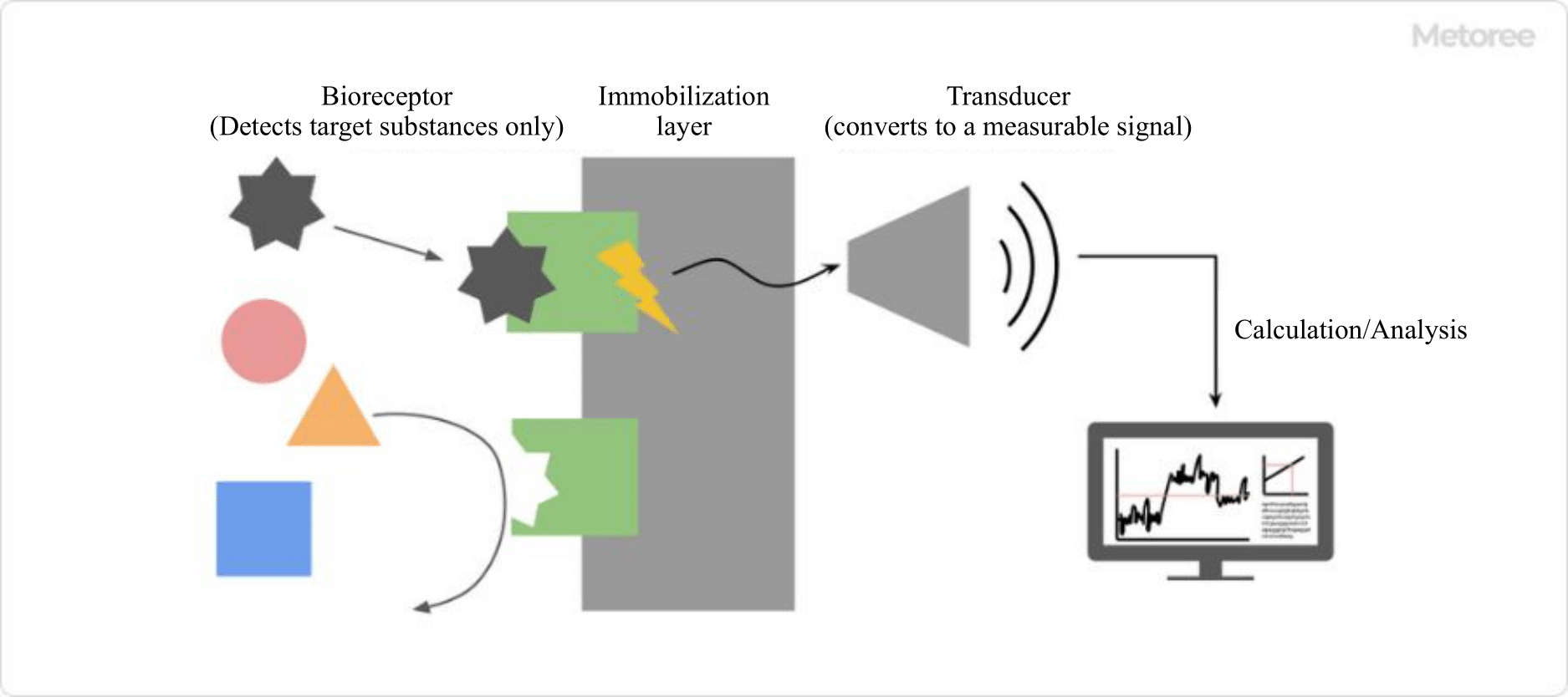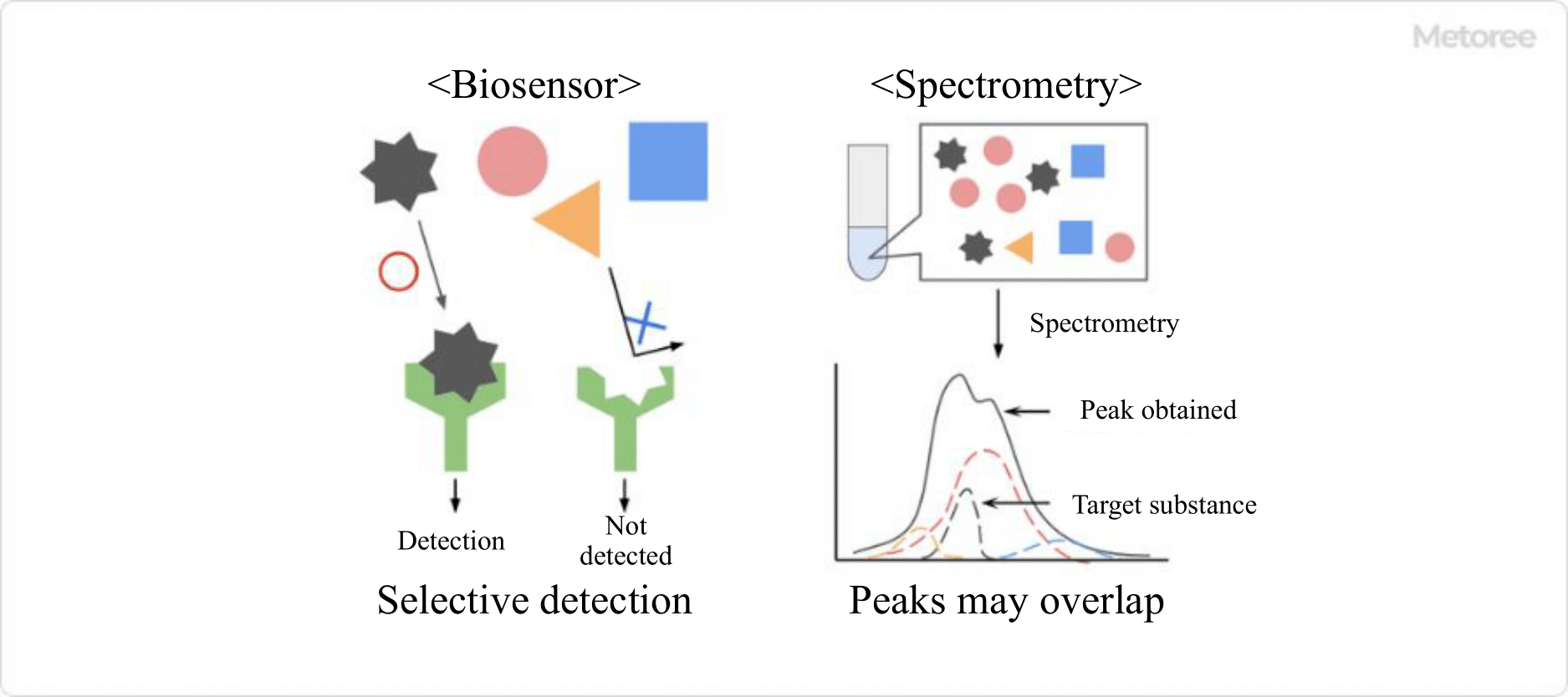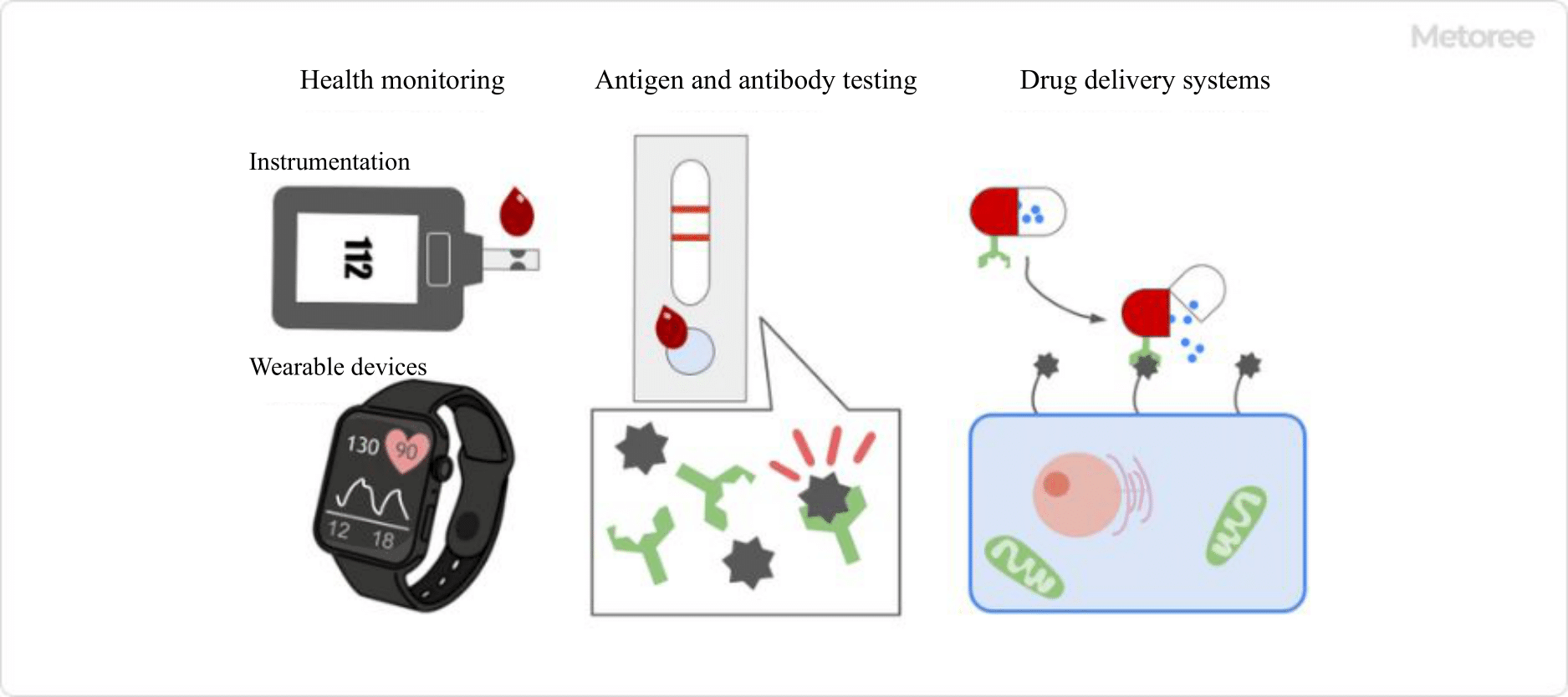What Is a Biosensor?
A biosensor is a sensor capable of specifically detecting a target substance using a biological reaction.
Materials used in biosensors are classified into three groups: the biocatalytic group consisting of enzymes, the biocompatible group, including antibodies and nucleic acids, and the microbial group, including microorganisms. By utilizing the molecular discriminating ability of these biomaterials, it is possible to detect the target substance specifically.
The development of biosensors requires interdisciplinary research in chemistry, biology, and engineering. It is expected to be applied in a wide range of fields, including medical and pharmaceutical sciences, food analysis, and environmental surveys.
Principle of Biosensors

Figure 1. Structure of biosensors
Biosensors are mainly composed of receptors, immobilization layers, and transducers.
1. Bioreceptor
A bioreceptor is a biological substance used to detect a target substance. By using a bioreceptor that selectively recognizes the target molecule, it is possible to detect only the target substance specifically. Biomolecules such as enzymes, antibodies, cells, aptamers, and nucleic acids are used as bioreceptors.
2. Immobilization Layer
The immobilization layer is a layer that immobilizes the biological substance used as a bioreceptor on the transducer without compromising its function.
In general, if a biological substance is immobilized by a strong method, its function and activity are often lost. However, if immobilization is weakened to maintain function and activity, the biological substance is detached, and the detection ability is reduced. Various research and development are being conducted to overcome this issue, and methods using matrices based on porous membranes and polymers, as well as immobilization methods such as physical adsorption and cross-linking methods, are being utilized.
3. Transducers
The transducer is the part that converts the response of the bioreceptor into a measurable signal. The two main types of measurable signals used are optical and electrochemical signals. By processing the obtained signals, the amount and concentration of the target substance can be calculated.
Applications of Biosensors

Figure 2. Characteristics of biosensors
Biosensors are produced using biological substances and are, therefore, relatively sensitive. In addition to the medical field, biosensors are also used in various other fields, such as the food and environmental industries, because they are generally inexpensive, compact, and easy to operate.
Conventional techniques for chemical experiments and spectroscopy are accurate but require complicated sample preparation and have the disadvantage of detecting signals other than those of the target substance.
Another drawback is that measurements must be performed in a stable room, so samples collected during field surveys must be brought back home once collected, and it takes time to obtain results.
Biosensors are expected to be used in a wide range of fields, as they are inexpensive measurement devices that are easy to operate and provide results in a short period.
In the field of medicine, in particular, the application of biosensors is advancing rapidly. For example, glucose biosensors are being clinically applied to the diagnosis of diabetes, which requires accurate control of blood glucose levels.
Other Information on Biosensors
Potential Medical Applications of Biosensors

Figure 3. Applications of biosensors
The most promising application of biosensors is in the medical field. Biosensors can be used to monitor one’s health condition for treatment and health management.
- Measurement of Blood Glucose Level
Diabetes patients measure their blood glucose levels using a simple blood glucose meter, but wearable devices can measure blood glucose levels without drawing blood. Various models, including contact lenses and watch-type devices, are being researched, and expectations are high for their practical application.
- Disease Diagnosis
Many sensors have been developed to diagnose diseases that previously required various tests, using only simple tests such as a urine test. For example, there are antigen-antibody tests that use immune reactions to measure disease-related proteins and viruses. Research is underway to develop more sensitive biosensors and quantitative measurement methods are being explored to diagnose multiple diseases using the same biosensor.
- Pharmacology
The application of biosensors is also being studied in the field of pharmacology. Drug delivery systems (DDS), which release the required amount of drug at the desired location in the human body, are expected to be the next generation of drug administration. Strictly speaking, they are not part of biosensors because they do not use transducers, but instead of generating a signal, they release the drug contained inside.
DDS-using receptors can release drugs only at the target location using human immune response, etc. This makes it possible to treat diseases that require surgery or diseases such as cancer that are difficult to cure by orally taking or injecting medicine.
It is expected that acquiring and using biochemical information in this way in the future will be useful for full-scale medicine and health care.